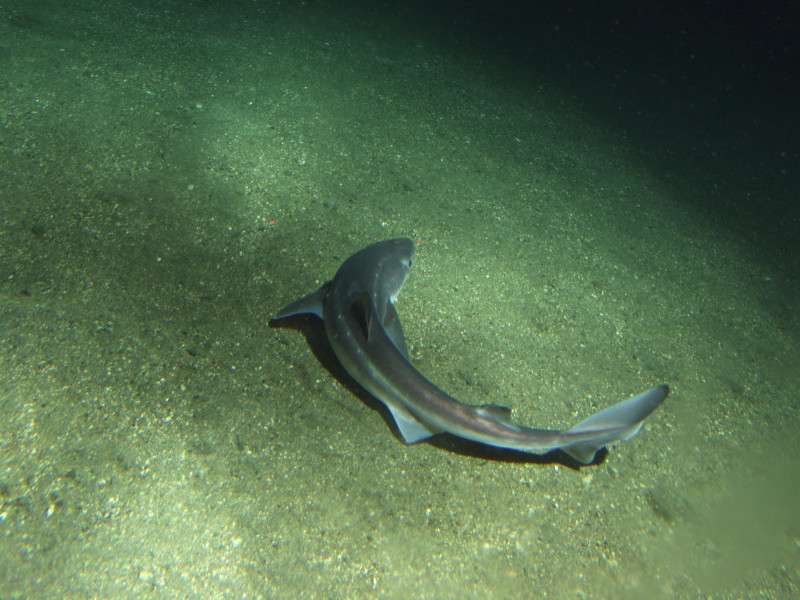
Spiny Dogfish Facts
- The quite evocative term of Spiny Dogfish perfectly serves as one of the common names for one of the best known members of the Squalidae Family of sharks. The truly remarkable marine animal also remains known by a number of other alternate names, though.
- These several synonymous titles include such equally distinctive names as the mud shark, the spurdog, and the piked dogfish, just to name a few of them. Among professional researchers, though, the amazing creature bears the difficult scientific name of the Squalus acanthias.
- The creature received that specific moniker due to the efforts of Carl Linnaeus himself. The highly esteemed Swedish zoologist recorded the first offical recognition of it as a separate and distinct species. He accomplished that scientifically noteworthy deed in the year 1758.
- Unfortunately, its situation appears to be somewhat unstable in many respects. Due to its population status, as well as numerous other factors, the IUCN currently lists it as Vulnerable. This lamentable status appears on the organization’s published Red List of Threatened Species.
- The multiple and varied dangers facing the remarkable evolved Spiny Dogfish continue to rapidly escalate, regrettably. Among these perils, over fishing continues to be the greatest threat to its continued existence, since the shark constitutes a commercially fished species.
- Other, newer factors also now pose serious, potentially terminal threats to this amazing species, though. Habitat loss, due to the various actions of man threaten to greatly reduce its range. The ongoing effects of climate change also now pose a great danger for it.
Related Articles
Spiny Dogfish Physical Description
It bears noting that, while remarkably impressive in many ways, sheer size isn’t the strong suit of the amazing Spiny Dogfish. To the great surprise of many people, this marvel of Nature actually remains a very small example of its Order, the Squaliformes. It’s nonetheless still quite impressive.
The species does, however, display a respectable degree of the physiological characteristic known as sexual dimorphism. In the case of this particular representative of its kind, this evolutionary trait typically manifests itself in terms of size, with females being slightly larger in average length.
Although exceptional individuals do exist, of course, adult males attain an average body length only equaling approximately 39 in (1 m). Mature females of this fascinating variety of shark, on the other hand, greatly exceed this, reaching an average length measuring roughly 62.6 in (1.59 m).
Otherwise, both genders strongly resemble each other in appearance, presenting the same basic color pattern. Members of both sexes display an overall grayish-brown shade, with the upper half of the body being a darker shade. Meanwhile, the underside usually remains much lighter in color.
It’s the surprising presence of one particular physical feature, though, that gives the Spiny Dogfish its unique common name. That’s the existence of two very sharp spines that appear on the dorsal area, which the resourceful animal uses as a means of self-defense when it’s threatened.
- Kingdom: Animalia
- Phylum: Chordata
- Class: Chondrichthyes
- Order: Squaliformes
- Family: Squalidae
- Genus: Squalus
- Species: S. acanthias
Spiny Dogfish Distribution, Habitat, and Ecology
To the great surprise of some people, the remarkable Spiny Dogfish inhabits a comparatively wide range of the marine waters of the world. Populations of this fascinating fish inhabit many varied regions. This includes the Pacific, the Atlantic, and also portions of the Indian Ocean.
In whatever part of the world populations of the animal appear, however, all individuals share one special trait. That’s because all of them maintain the same basic pattern of behavior regarding choice of habitat. More precisely, this animal evolved to live primarily as a bottom-dwelling species.
With that being said, though, some specimens of this intriguing type of shark have been observed by researchers at depths of as much as 2,300 ft (700 m). The great majority of observed groupings or individuals nevertheless make their home at depths of between 160 – 490 ft (50 – 149 m).
Like all other known sharks, the tantalizing Spiny Dogfish feeds entirely as an aggressive carnivore. Despite its comparatively small size, however, this animal is certainly no exception to this trait. It actively hunts a wide variety of prey, including fish, squid, shrimp, crabs, and even jellyfish.
Though some monitored examples travel singly, the vast majority of members of this intriguing species appear in incredibly large packs, that can number in the thousands. After mating, live birth occurs an average of an astonishing 22 – 24 months later. A typical lifespan averages 35 – 54 years.
Species Sharing Its Range
Dugong
Check out our other articles on 4 Beguiling Bats, Guinan cock-of-the-rock, Loktak Lake, Purple Pitcher Plant, Numbat, European Mantis, Black Rain Frog, Flatback Sea Turtle, Little Auk
